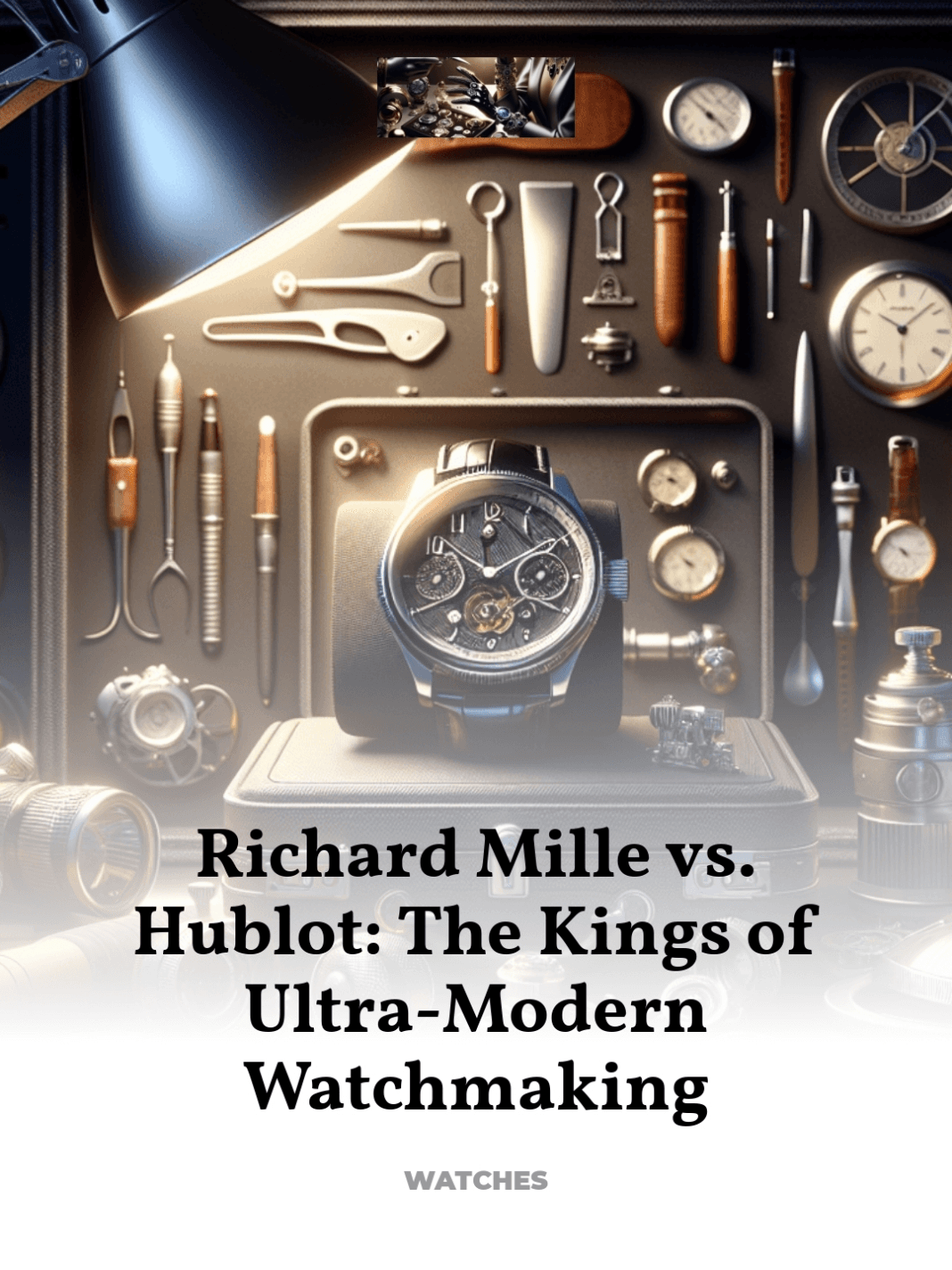Which Brand Pushes the Boundaries of Materials and Innovation Further?
In the realm of high-end horology, Richard Mille and Hublot stand as titans of innovation and avant-garde design. These brands have redefined modern watchmaking with their bold approaches to materials, mechanics, and aesthetics. This article delves deep into the pioneering spirit of these two luxury watchmakers to determine which brand pushes the boundaries of materials and innovation further.
- Introduction to Richard Mille and Hublot
- Material Innovation and Technological Advancements
- Design and Aesthetics
- Impact on the Watchmaking Industry
- Cultural Significance and Brand Philosophy
- Concluding Insights: Pioneering the Future of Watchmaking
Introduction to Richard Mille and Hublot
Founded in 1999 by Richard Mille, the eponymous brand quickly became synonymous with ultra-modern luxury watches that combine high-tech materials with complex mechanical engineering. Richard Mille’s philosophy centers around precision, innovation, and a deep commitment to artistry.
Hublot, established by Carlo Crocco in 1980, revolutionized watch design with the introduction of the first natural rubber strap. Under the leadership of Jean-Claude Biver since 2004, Hublot has embraced the “Art of Fusion” philosophy, blending traditional watchmaking with modern materials and techniques.
Material Innovation and Technological Advancements
Both Richard Mille and Hublot have pioneered numerous advancements in materials science. Richard Mille’s approach to watchmaking is heavily influenced by the aerospace and automotive industries. The brand has developed materials like TPT® carbon, a highly durable and lightweight material derived from thousands of parallel filaments obtained by dividing carbon fibers. These innovations not only enhance the functionality and durability of their watches but also contribute to their distinctive aesthetic.
Hublot has made significant strides in material innovation with the creation of Magic Gold, the world’s first scratch-resistant gold alloy, and the extensive use of ceramics, sapphire, and other composite materials. These materials are not only aesthetically pleasing but also serve practical purposes, enhancing the watches’ longevity and wearability.
Design and Aesthetics
The design ethos of Richard Mille is a reflection of its dedication to form following function. The watches are designed from the inside out, with each component meticulously crafted to ensure optimal performance. The skeletal designs not only reveal the intricate inner workings but also create a visual spectacle on the wrist.
Hublot’s design is centered around its “Art of Fusion” philosophy, which manifests in bold and often large timepieces that combine unusual materials and colors. This approach not only challenges traditional aesthetics but also creates a unique and recognizable brand identity.
Impact on the Watchmaking Industry
Richard Mille and Hublot have both had profound impacts on the watchmaking industry. Richard Mille’s technical innovations have set new standards in what is possible in watch mechanics and materials. The brand’s use of gear-driven mechanical complications and a focus on shock resistance have influenced the industry at large.
Hublot has been a trailblazer in marketing and brand collaborations, partnering with sports franchises, artists, and celebrities. These collaborations have not only increased brand visibility but have also introduced watchmaking to a broader audience, thereby expanding the market.
Cultural Significance and Brand Philosophy
Richard Mille and Hublot both extend beyond the confines of traditional watchmaking, embodying modern luxury and innovation. Richard Mille’s watches are often seen on the wrists of elite athletes and celebrities, symbolizing a fusion of top-tier performance and luxury. Hublot’s frequent collaborations with artists and athletes highlight its commitment to diversity and contemporary culture, resonating with a younger, dynamic audience.
Concluding Insights: Pioneering the Future of Watchmaking
In conclusion, while both Richard Mille and Hublot are leaders in innovative watchmaking, Richard Mille might edge out slightly in terms of pushing the boundaries of materials and mechanical innovation. However, Hublot’s impact on integrating contemporary culture with traditional watchmaking and its aggressive marketing strategies have broadened the appeal and accessibility of luxury watches to a wider audience.
For further reading on the innovations and cultural impacts of these prestigious brands, explore authoritative sources such as Hodinkee’s extensive archives.



